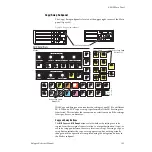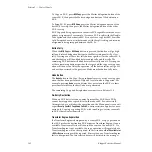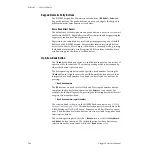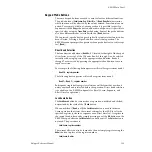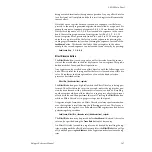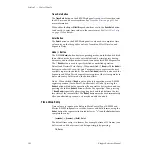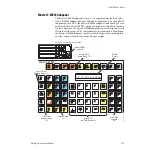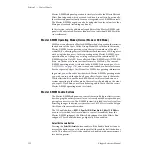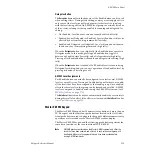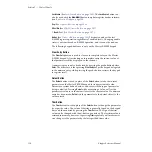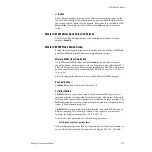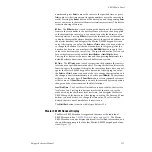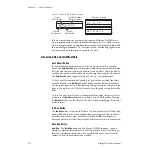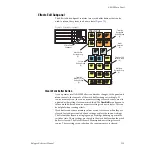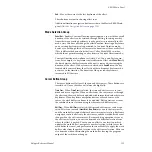
106
Kalypso Reference Manual
Section 2 — Control Panels
The next empty register will receive the effect data and become the current
effect. This action will not occur and an error will be displayed if there are
no empty registers.
To learn M/E settings to a register in a different bank, the new bank must
be specified. One of the bank selection procedures described above is used.
Lock/Learn
, (
bank selection
),
register number
The learned register becomes the current effect. Subsequent register selec-
tions will be from that new bank unless a different bank is selected before
the operation.
When shifted (
↑
/Bank
button is lit) the
Lock/Learn
button is used to control
locking a register so it cannot be altered. The lock on the current register is
toggled on and off with these buttons. The lock status of the current effect
is shown on the E-MEM Readout display (see
Sequence Button
The
Seq
button is used to program and recall sequences of registers. This
prefix button modifies Learn and Recall operations.
A sequence must first be learned to the participating registers, using the
following procedure. Parentheses indicate optional values:
Lock/Learn
,
Seq
(bank selection)
,
register
,
(delay time)
(bank selection)
,
register
,
(delay time)
Lock/Learn
The
Seq
button may be pressed before
Lock/Learn
if desired. The bank selec-
tion process described earlier may be used. A delay time can be specified
using the
Trans Rate
button to initiate entry of a time value (see
). A sequence loop can be created by selecting the first
register again as the last register in the sequence. Effect Dissolves can be
performed during a sequence by learning the Effect Dissolve to the desired
registers used in the sequence. This combined capability can be used to
build complex effects.
A sequence is performed by recalling a register that has been programmed
as part of a sequence with the following procedure:
Seq
,
(bank selection)
,
register
A sequence begins by recalling the specified register, then performs an
Effect Dissolves if programmed, runs its effect if it has multiple key frames
and
Auto Run
is active, waits the specified amount of delay time, then recalls
the next register in the sequence, and proceeds to either the end of the
sequence or continues to loop. The
Seq
button remains high tally during the
execution of the sequence. Pressing the
Seq
button while a sequence is










